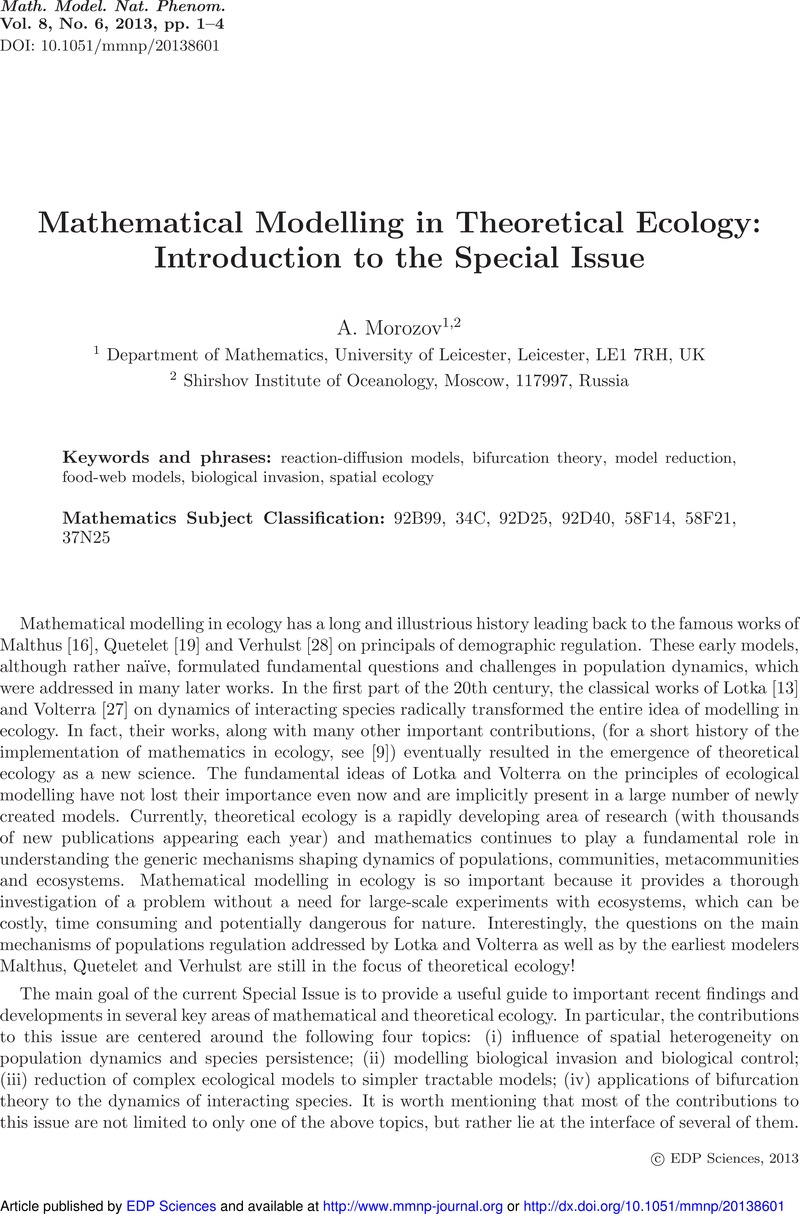Crossref Citations
This article has been cited by the following publications. This list is generated based on data provided by Crossref.
Grimm, Volker
and
Berger, Uta
2016.
Structural realism, emergence, and predictions in next-generation ecological modelling: Synthesis from a special issue.
Ecological Modelling,
Vol. 326,
Issue. ,
p.
177.
Zhdanova, O. L.
Neverova, G. P.
and
Frisman, E. Ya.
2022.
Predator Evolution in a Model of Interacting Species: To the Question about Maintaining Polymorphism by Litter Size in Natural Populations of Arctic Fox.
Russian Journal of Genetics,
Vol. 58,
Issue. 1,
p.
94.
Neverova, G. P.
Zhdanova, O. L.
and
Frisman, E. Ya.
2022.
Evolutionary dynamics of predator in a community of interacting species.
Nonlinear Dynamics,
Vol. 108,
Issue. 4,
p.
4557.
Farivar, F.
Gambino, G.
Giunta, V.
Lombardo, M. C.
and
Sammartino, M.
2025.
Intraguild Predation Communities with Anti-predator Behavior.
SIAM Journal on Applied Dynamical Systems,
Vol. 24,
Issue. 2,
p.
1110.



